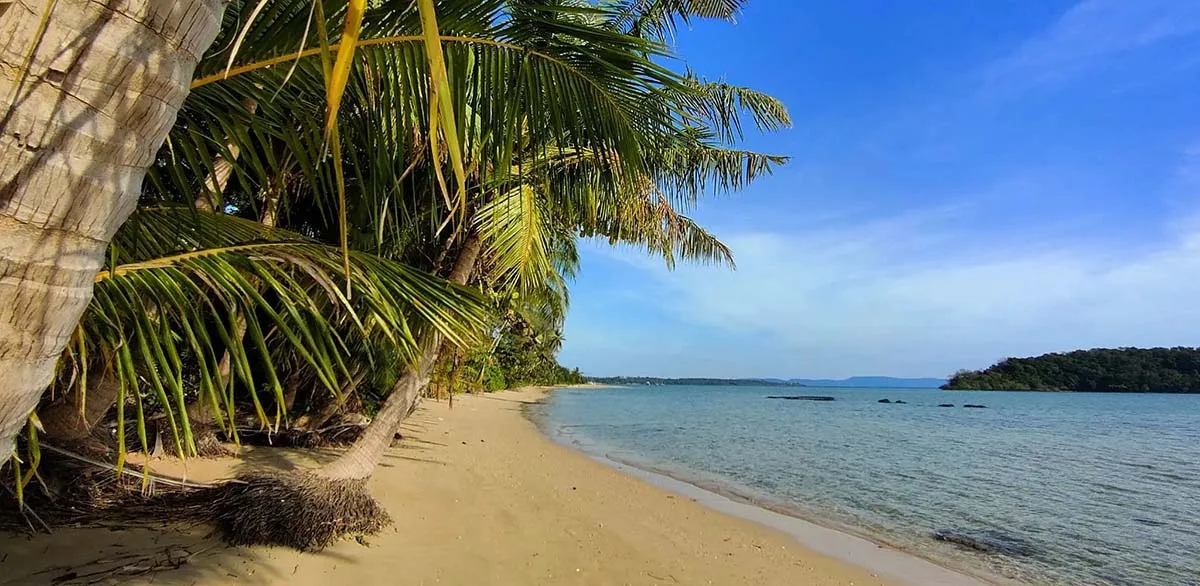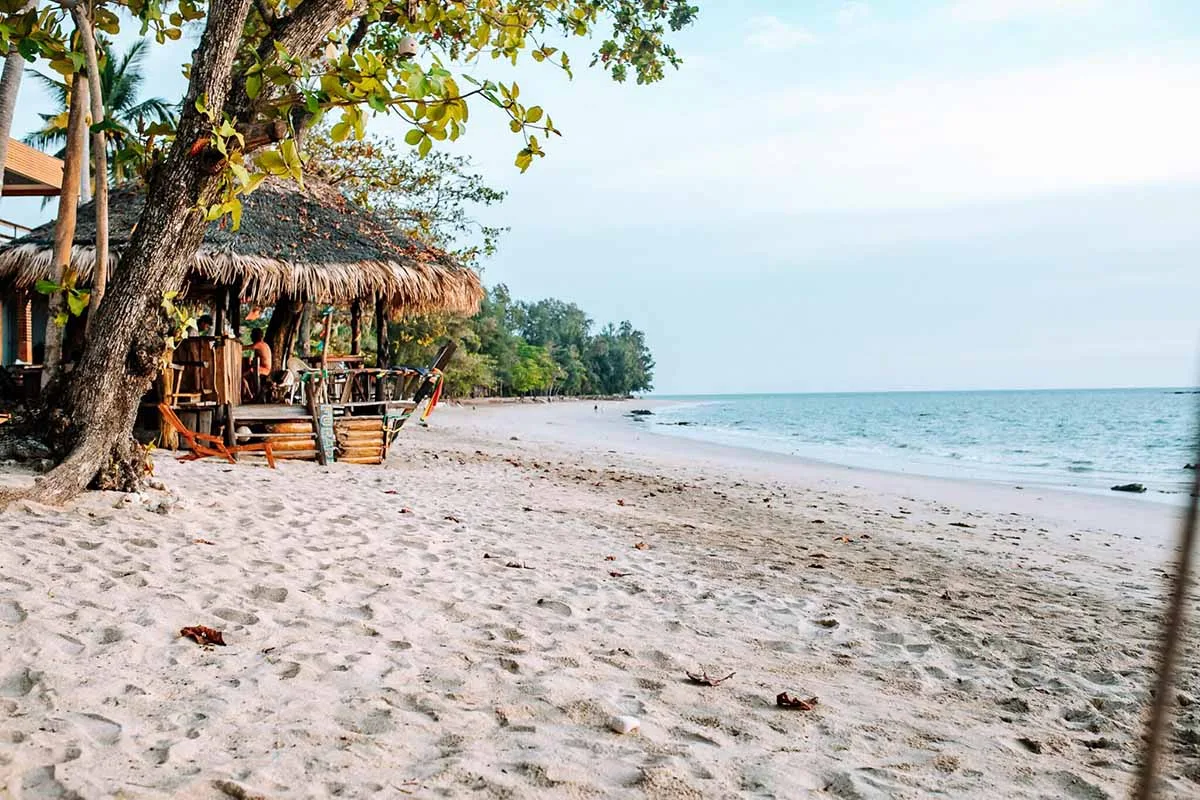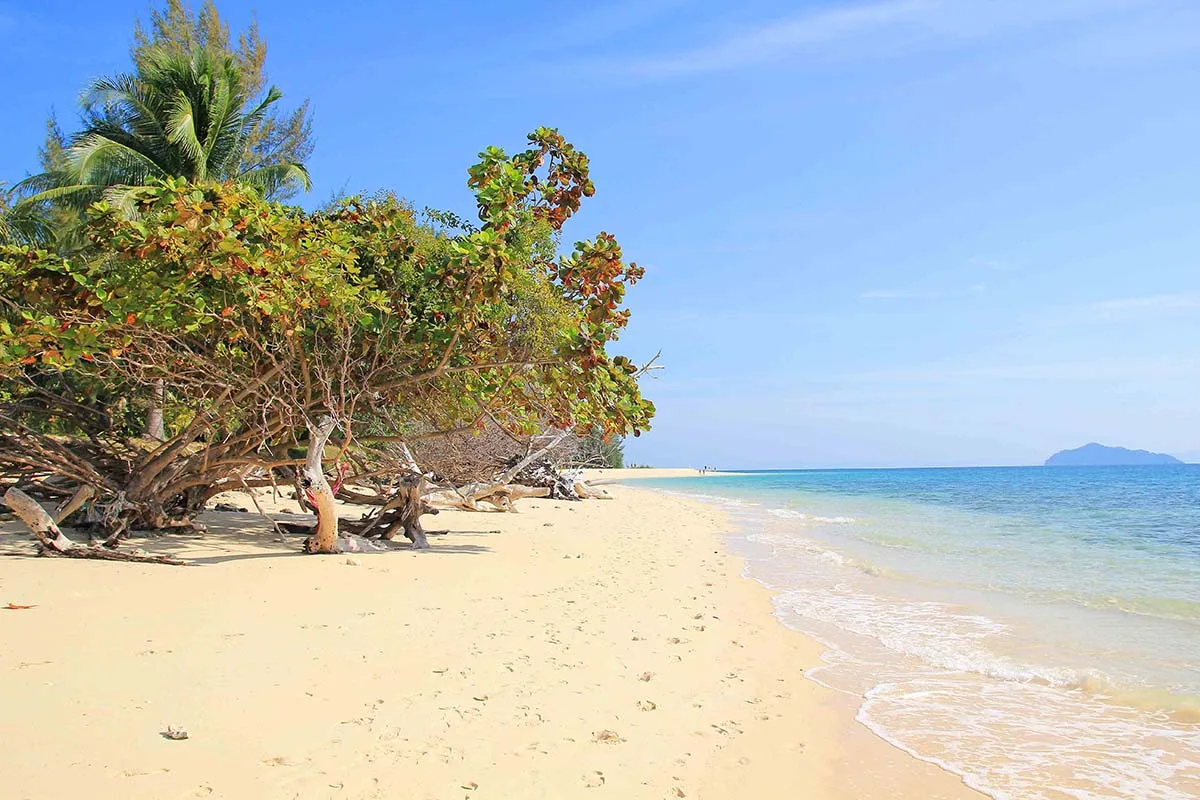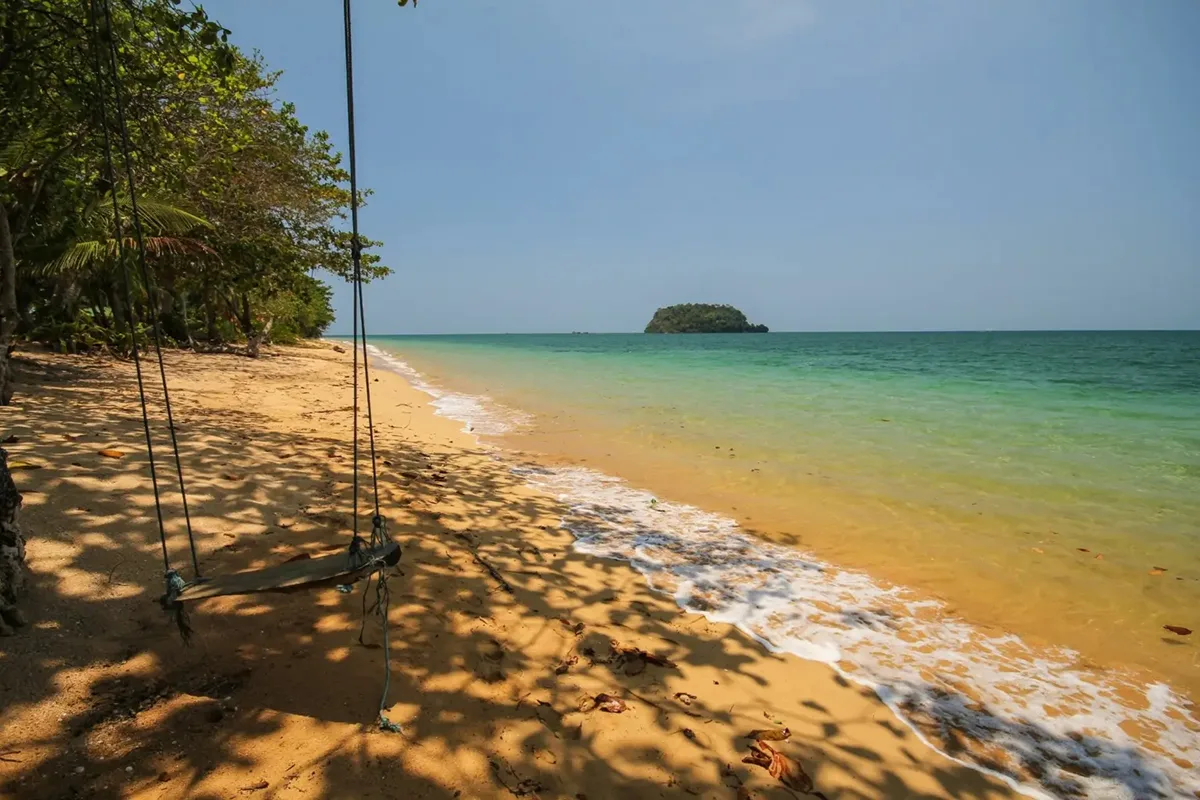Introduction: So Many Islands, So Little Noise
Picture this: you’re lounging under a palm tree on a beach so quiet, you can hear coconuts contemplating when to drop. There are no crowds. No blaring long-tail engines. No awkward influencers doing yoga on rocks. Just you, the sea, and a perfectly chilled coconut.
If this sounds like a fantasy, buckle your seatbelt (or sarong) – because Thailand has more than 1,400 islands, and a good number of them are still off the mainstream radar. While most visitors flock to Phuket, Koh Phi Phi, or Koh Samui, the real treasures lie just a little further from the selfie line.
Let’s uncover Thailand’s hidden islands – those lesser-known gems where authenticity, beauty, and “wait, am I the only one here?” vibes are in abundance.
🏝️ What are the best hidden islands in Thailand?
Koh Phayam – The Bohemian Bliss

Koh Phayam is what happens when you mix a Bob Marley album with a tropical postcard and hit shuffle. Located in Ranong Province near the Myanmar border, this under-the-radar paradise is known for its zero car policy, slow-moving scooters, and people who’ve genuinely forgotten what day it is. You won’t find mega-resorts or Instagram queues here – just ramshackle beach bungalows, reggae beach bars with hammocks as seating, and endless stretches of soft sand and cashew trees (yes, they grow here!).
Ao Yai (Long Beach) is the island’s most famous stretch – a golden crescent of sand where time dilates and flip-flops become optional. Whether you’re sipping a Chang beer at sunset or practicing downward dog next to a barefoot Canadian named Moonbeam, Koh Phayam promises peace with a side of eccentricity. It’s rustic, it’s raw, and it’s the detox your mind didn’t know it needed.
📍 Where: Ranong Province, near the Myanmar border
🧘♀️ Why go: No cars. Just scooters, sand, reggae bars, and sea gypsies. Koh Phayam is where deadlines go to die.
💡 Don’t miss: Ao Yai Beach, Hippie Bar, and a sunset with zero background EDM.
🏕️ Stay vibe: Rustic bungalows, banana pancakes, and barefoot luxury.
Q: Is Koh Phayam worth visiting?
A: Absolutely! With its untouched beaches, laid-back vibe, and near-absence of motor vehicles, Koh Phayam is one of Thailand’s last true island getaways for travelers seeking peace and authenticity.
Koh Mak – The Green Queen

Tiny but mighty, Koh Mak sits quietly between Koh Chang and Koh Kood, doing its own eco-friendly thing while the big islands hustle for tourists. Owned and managed by just a handful of families who’ve resisted mass development, Koh Mak is a model of sustainable tourism. Solar panels, plastic bans, and locally grown food are the norm here – not marketing gimmicks. You’ll bike through rubber plantations, nap under mangroves, and snorkel in marine zones protected by actual science, not wishful thinking.
Unlike many “quiet” islands that turn into full-moon mayhem after dark, Koh Mak remains mellow, no matter the hour. Grab a beachfront bungalow, enjoy a sunset BBQ on the sand, and chat with locals about everything from fishing to jellyfish policies. This is where you go to breathe deeper, move slower, and realize that yes – heaven might just be biodegradable.
📍 Where: Between Koh Chang and Koh Kood
🌿 Why go: Thailand’s most eco-conscious island. Think solar energy, zero-waste resorts, and clear conscience cocktails.
🚴 Best explored by: Bicycle. Yes, really. And it’s delightful.
🍍 Fun fact: Owned by 5 families who collectively said, “Let’s not ruin this.”
Q: How do I get to Koh Mak?
A: You can take a ferry or speedboat from Trat’s Laem Ngop Pier. It’s about 40 minutes by speedboat – and totally worth the ride.
Koh Jum (aka Koh Pu) – The Chill Pill

Just a short boat ride from Krabi, Koh Jum is the kind of island that sounds like a sneeze but feels like a hug. Divided into two names (Jum in the south, Pu in the north), it’s technically one island – though even the locals don’t always agree where one ends and the other begins. What everyone does agree on is that this place is pure, unfiltered serenity. No bars pumping club anthems, no water scooters, no inflatable bananas – just long walks on the beach and lizard footprints in the sand.
The accommodation here leans toward bamboo bungalows with mosquito nets that double as abstract art installations. Electricity is sometimes more of a “concept” than a constant, but that’s part of the charm. You’ll eat fresh seafood, chat with fishermen, and maybe learn to nap like a professional. Koh Jum isn’t for thrill-seekers – it’s for soul-seekers who want to go off-grid and off-script.
📍 Where: Between Krabi and Koh Lanta
🦦 Why go: No resorts with infinity pools. No waterparks. Just chill fishing villages and smiling locals.
🛶 Do this: Kayak through mangroves and catch the actual sunset, not your phone catching it.
🐢 Vibe check: Come here if your soul needs a nap.
Koh Lao Liang – The Climber’s Paradise

If the idea of sharing an island with no more than a dozen other people sounds appealing, meet Koh Lao Liang – a limestone rock outcrop so dramatic, it looks like Mother Nature’s attempt at flexing. Nestled in the Trang archipelago, this island is famous among rock climbers who come for the sheer cliff faces and jaw-dropping sea views. But even if you don’t know a carabiner from a cantaloupe, you’ll still fall in love with the quiet beaches and transparent turquoise waters.
The only accommodation is a seasonal glamping site – yes, actual tents – but these aren’t your muddy festival kind. Think canvas abodes with real beds, right on the beach, and seafood caught and grilled meters from your door. There’s no nightlife, unless you count the stars and crashing waves. Koh Lao Liang is a nature-first, ego-last kind of place. It’s remote, it’s exclusive, and it might just be the best digital detox you’ll ever endure.
📍 Where: Trang Province
🧗 Why go: Jaw-dropping limestone cliffs, quiet beaches, and only one glamping resort. That’s it.
🔥 Hot tip: You’ll need to book in advance, because they only let a few people in at a time. Like a VIP lounge, but with hermit crabs.
Q: Can I stay overnight on Koh Lao Liang?
A: Yes, but only during high season (November–April), and you’ll need to book early. The island offers eco-glamping tents with unbeatable oceanfront views.
Koh Bulon Lae – The “Wait, Where Am I?” Island

Somewhere off the coast of Satun Province, near the Malaysian border, floats Koh Bulon Lae – a tiny island where chickens outnumber people and silence is the default soundtrack. With no ATMs, no cars, and limited electricity, Bulon Lae forces you to unwind, whether you like it or not. It’s the kind of place where you can read an entire book in one sitting – or three pages over three days, depending on how hypnotic the ocean is that day.
The main beach, Ao Phangka, is pristine and calm, with clear shallows perfect for paddling or staring into the abyss of your life decisions. Accommodation ranges from simple bamboo huts to more comfortable beachfront bungalows, and food is delightfully local. The island is home to a small Muslim community, so it’s respectful to dress modestly and enjoy the tranquil pace of life. If you’re looking for simplicity wrapped in seashells, this is your spot.
📍 Where: Satun Province, near the Malaysia border
🦜 Why go: Think turquoise waters, hammocks, and a population of friendly locals and even friendlier cats.
🔕 What it doesn’t have: ATMs, loud music, or reminders of your inbox.
Koh Libong – The Dugong Hideout

Libong isn’t trying to win any island beauty pageants—it’s rugged, wild, and a little moody. But what it lacks in manicured beaches, it makes up for in charm, authenticity, and dugongs. Yes, dugongs – those elusive sea cows that look like manatees who got into yoga. Koh Libong is one of their last habitats in Thailand, and locals are fiercely protective of their sea-moo friends.
The island itself is relatively large and home to several small fishing villages where you can experience real Thai island life. Roads are dusty, transport is by motorbike or tuk-tuk, and accommodation is simple but welcoming. Eco-tourism is the name of the game here, with boat tours led by conservationists and community-led snorkeling trips. Come here if you’re the kind of traveler who says “I’d rather see a dugong than a DJ set.” (Same.)
📍 Where: Trang Province
🐄 Why go: It’s the only place in Thailand where you might spot a dugong (the sea cow’s cuter cousin).
🐚 Do this: Eco-tourism boat trip with locals who know the ocean like their own bathtub.
🛖 Stay simple: Think bamboo huts, sea breezes, and the occasional gecko drama.
Q: Are dugongs endangered in Thailand?
A: Yes, dugongs are a vulnerable species, and Koh Libong is one of the few protected places where you might spot them in the wild – ethically and respectfully.
Koh Talu – The Coral Restoration Hero

Not all heroes wear capes. Some wear fins and live on private islands dedicated to coral restoration – and Koh Talu is one of them. Situated in the Gulf of Thailand, just a few hours from Hua Hin, Koh Talu is a rare breed: a privately-owned island that doesn’t just talk sustainability but walks it (in biodegradable sandals). They run their own coral nurseries, educate tourists about marine ecology, and ensure that even your snorkeling trip supports reef rehabilitation.
The island has one resort – low-key, low-rise, and designed to blend into the scenery. Activities include kayaking, reef-friendly snorkeling, and sometimes just staring at the sea like it owes you money. Because the island is privately managed, visitor numbers are limited and vibes are kept blissfully mellow. If you’re looking for a responsible getaway where you can enjoy paradise and protect it, Koh Talu is your ticket.
📍 Where: Prachuap Khiri Khan Province
🧼 Why go: Private island with a mission. Koh Talu is big on coral restoration, clean seas, and sustainable tourism.
🤿 Best for: Snorkelers and good humans.
🌊 Go if: You want to swim guilt-free knowing you’re supporting marine conservation.
🧭 How to Travel to These Secret Islands
You’ll often need a little patience and some Thai ferry scheduling wizardry. Most hidden islands are accessible from larger hubs like:
Trat (for Koh Mak and Koh Kood)
Krabi (for Koh Jum and Koh Lao Liang)
Ranong (for Koh Phayam)
Satun or Trang (for Koh Bulon Lae and Koh Libong)
The magic? That effort is what keeps these places quiet.
😎 Why Visit Thailand’s Hidden Islands Instead of the Famous Ones?
Less Noise, More Nature.
You won’t be stepping over sunburned tourists or paying for overpriced pad thai here.
Authentic Thai Culture.
These islands still live on island time – literally. People talk slower. Meals take longer. And no one rushes your coconut.
Wildlife Encounters.
From dugongs to dolphins and monitor lizards to macaques, nature is part of the daily scenery.
Low-Key Luxury.
Forget five-star hotels. Think million-star night skies and five-lizard room companions.
🌞 Best Time to Visit Thailand’s Hidden Islands?
The dry season from November to April is your best bet. Avoid the monsoon season unless you enjoy surprise showers and floating flip-flops.
🧳 What to Pack for Hidden Island Adventures
Reef-safe sunscreen (you don’t want to be that tourist)
Mosquito repellent (your ankles will thank you)
A flashlight (some places still sleep early)
Cash (ATMs? Hah.)
A big smile and small expectations – you’ll get big surprises
🤔 You May Ask:
Q: Are Thailand’s hidden islands safe for solo travelers?
A: Yes, most of them are very safe, especially for respectful and mindful travelers. But always check local updates, ferry schedules, and accommodation availability.
Q: Can I work remotely from these lesser-known islands?
A: Some yes (like Koh Mak or Koh Phayam). But others might lack solid Wi-Fi. Consider it a digital detox – or just call it “jungle lag.”
Q: Which hidden island in Thailand is best for snorkeling?
A: Koh Talu and Koh Lao Liang are top picks for vibrant coral reefs and crystal-clear waters.
🛶 Pro Tips for Visiting Thailand’s Hidden Islands
Respect the locals – human and animal alike.
Don’t leave trash. If you brought it, take it back.
Learn basic Thai greetings. A “Sawasdee ka/krap” goes a long way.
Book your ferry in advance if you’re not a fan of surprises.
Carry snacks. Hunger strikes harder when you’re surrounded by paradise and no shops.
🗣️ Final Thoughts: Is It Time You Discovered Thailand’s Best-Kept Secrets?
These hidden islands are not just places – they’re experiences. They’re where you trade the Wi-Fi signal for a shooting star, the hotel breakfast buffet for grilled fish caught two hours ago, and the tourist trail for your own footprints in the sand.
If you’re craving something deeper than a beach party or a cocktail in a coconut, these islands are calling. And trust us: when Thailand whispers, you listen.
📣 Tell Us: What’s Your Secret Island Story?
Have you ever discovered a hidden gem in Thailand that made you feel like the last human on Earth (in a good way)? Tell us in the comments below! 👇
And if you loved this guide, please share it with your fellow wanderlusters on social media – because great secrets are meant to be shared (responsibly, of course).